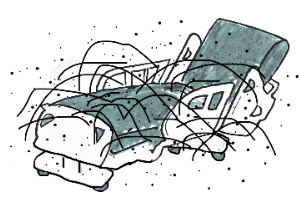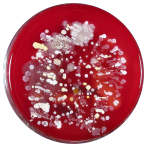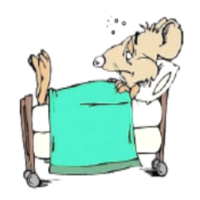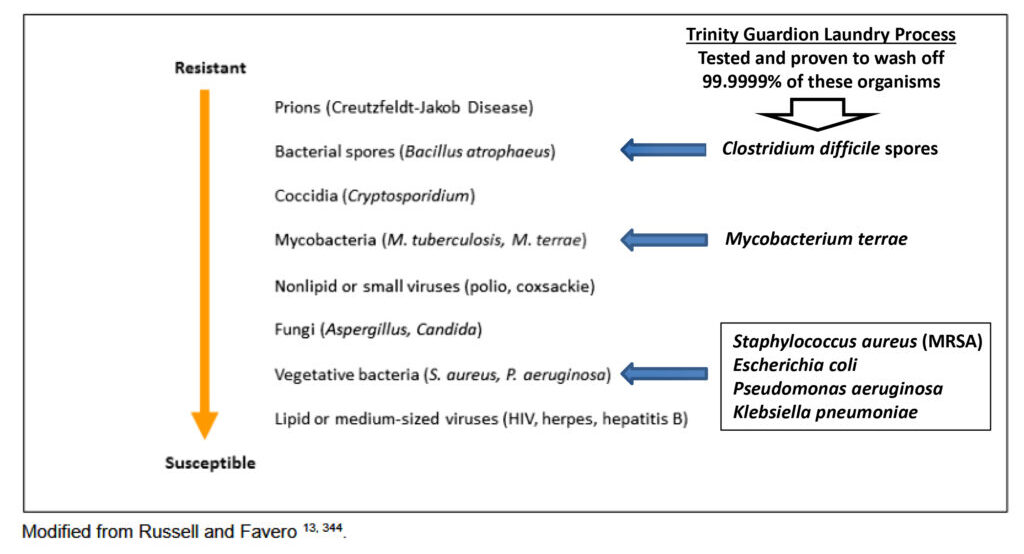INFECTION PREVENTION
WHAT YOU NEED TO KNOW ABOUT BEDS AND THE HOSPITAL ENVIRONMENT

Beds are center of patient care and move throughout the hospital.
Asymptomatic and Symptomatic Patients Can Cause HO-CDI (10-25% of patients are asymptomatic).1

CULTURE RESULTS FROM
A “CLEAN” MATTRESS
Hospital Beds Are Dirtiest Patient Surface in a Patient Room 2 After terminal cleaning – mattresses are #2 caregiver touchpoint 3; #1 patient.

Patients Have 5.8x Greater Chance of HAI if previous bed occupant had an HAI, 3.83 x for C. diff alone.4

CDC: C.diff Spores Persist on Surfaces/Devices for Months and may be reservoir, Transmitted oral/fecal route5.

Less Than 5 log Reduction of C. diff Spores in Mice Cages can Transmit C. diff to Mice.6 6-8 spores can cause C. diff. 100MM spores possible on bed at discharge –3 log reduction leaves 100,000 spores.

Gloved Caregiver Hands are Contaminated 50% of Time before treating the patient 7
Order of resistance is taken from CDC Guideline for Disinfection and Sterilization in Healthcare Facilities (2008) Figure 1 Decreasing order of resistance of microorganisms to disinfection and sterilization

- Shaughnessy MK, Micielli RL, DePestel DD, et al. Evaluation of hospital room assignment and acquisition of Clostridium difficile infection. Infect Control Hosp Epidemiol. 2011;32(3):201-206. doi:10.1086/658669.
- S. Saadi,R Allem,M Sebalhia,AMerouane,M Bakkali, Bacterial contamination of neglected hospital surfaces and equipment in an Algerian hospital, 2021.
- Huslage K, A quantitative approach to defining “high touch” surfaces in hospitals, Infect Control Hosp Epidemiol 2010;31(8):850-853 doi 1086/655016
- Cohen B, Liu J, Cohen AR, Larson E. Association between healthcare-associated infection and exposure to hospital roommates and previous bed occupants with the same organism. Infect Control Hosp Epidemiol. 2018;39(5):541-546. doi:10.1017/ice.2018.22.
- Centers for Disease Control and Prevention. Clostridium difficile infection information for patients. Available from: https://www.cdc.gov/cdiff/clinicians/faq.html.
- Larson HE, Borriello SP. Quantitative study of antibiotic-induced susceptibility to Clostridium difficile enterocolitis in hamsters. Antimicrobial Agents Chemother. 1990;34(7):1348-1353.doi:10.1128/aac.34.7.1348.
- Guerrero DM, Nerandzic MM, Jury LA, Jinno S, Chang S, Donskey CJ. Acquisition of spores on gloved hands after contact with the skin of patients with Clostridium difficile infection and with environmental surfaces in their rooms. Am J Infect Control. 2012;40(6):556-558. doi:10.1016/j.ajic.2011.08.002.
